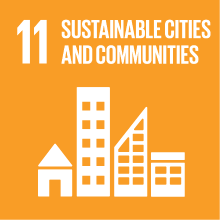ANTHROPOLOGY OF IMAGES IN THE EASTERN MEDITERRANEAN
- Academic year
- 2024/2025 Syllabus of previous years
- Official course title
- ANTROPOLOGIA E STORIA DELLE IMMAGINI NELL'ORIENTE MEDITERRANEO SP
- Course code
- FM0473 (AF:508660 AR:285074)
- Teaching language
- Italian
- Modality
- On campus classes
- ECTS credits
- 6
- Degree level
- Master's Degree Programme (DM270)
- Academic Discipline
- L-OR/01
- Period
- 1st Semester
- Where
- VENEZIA
- Moodle
- Go to Moodle page
Contribution of the course to the overall degree programme goals
Moreover, this course can be fully or partially integrated with the Archaeology of the Levant classes. If you decide to follow both, you'll gain an interdisciplinary perspective by studying case studies from the past using the anthropological archaeology toolkit.
It's recommended that you have a good command of English and Italian. However, if you don't speak these languages, don't worry. Contact the teacher and tailor your study strategy to your needs with her help.
This course is part of the MA in Cultural Anthropology but, students from other MAs are welcome to join. With a comprehensive approach and an interdisciplinary perspective, this course is an opportunity to expand your knowledge and gain perspectives in visual culture studies.
Expected learning outcomes
Here are some of the key learning outcomes you can expect from this course:
1. Knowledge and understanding:
- You will gain a thorough understanding of the theory and methods of Image Studies, with a specific focus on the Anthopology of Art.
- You will explore the unique issues and scientific challenges of studying contested public monuments.
2. Application of knowledge and understanding:
- You will be able to confidently discuss the meaning and function of emblematic monuments discussed in class from different theoretical and methodological perspectives.
- You will learn how to design a research strategy to address a public monument of your choice
- Once you complete this class, you will gain a fuller understanding of the political dimension of public urban space
3. Making judgements:
- You will be able to formulate your own interpretative hypothesis for the monuments discussed in class.
- You will develop your ability to critically evaluate textbooks and articles read in class.
4. Communication:
- You will learn how to effectively cooperate in groups to solve problems.
- You will develop proactive skills in class.
- You will refine your ability to speak appropriately in front of an audience.
- You will learn how to write a short academic essay.
5. Lifelong learning skills:
- You will learn how to frame images from the perspective of cultural anthropology and image studies.
- You will learn how to quickly scan a scientific article for essential information.
- You will increase your confidence in public speaking.
- You will strengthen your abilities in scientific writing.
Pre-requirements
Contents
The course is divided into two parts. In the first part, students learn and discuss various theoretical perspectives based on directed readings. The second part requires students to apply the theoretical tools to selected case studies and present their research through an oral presentation. Additionally, students must submit a written essay on their chosen case study at the end of the course.
The course demands active participation from each student. Reading assignments will be discussed in class, and we expect students to engage in lively and thought-provoking discussions. To excel in this course, students must prepare an oral presentation and a short essay on a case study of their choice.
Referral texts
For general reference, the following books are suggested:
H. Morphy / M. Perkins (a cura di). 2006. The anthropology of art: a reader. John Wiley & Sons.
Alfred Gell, Art and agency: an anthropological theory, Oxford 1998
Robert Layton, The anthropology of art, Cambridge 1981
For the topics of this year's course, refer to:
T. Montanari. 2024. Le statue giuste. Bari: Laterza.
A. Pinotti. 2023. Nonumento. Un paradosso della memoria. Johan & Levi.
Germano Maifreda, "Immagini contese. Storia politica delle figure dal Rinascimento alla cancel culture", Milano 2022
Assessment methods
Regarding the grading scale (the method by which grades will be assigned), regardless of whether the student is attending or non-attending:
A. Scores in the 18-22 range will be given in the presence of:
Sufficient knowledge and applied understanding related to the syllabus;
Limited ability to gather and/or interpret data, forming independent judgments;
Sufficient communication skills, particularly in relation to the use of specific and appropriate terminology;
B. Scores in the 23-26 range will be given in the presence of:
Fair knowledge and applied understanding related to the syllabus;
Fair ability to gather and/or interpret data, forming independent judgments;
Fair communication skills, particularly in relation to the use of specific terminology;
C. Scores in the 27-30 range will be given in the presence of:
Good to excellent knowledge and applied understanding related to the syllabus;
Good to excellent ability to gather and/or interpret data, forming independent judgments;
Fully appropriate communication skills, particularly in relation to the use of specific and appropriate terminology and language;
D. Honors will be awarded in the presence of excellent knowledge and applied understanding related to the syllabus, judgment capability, and communication skills.
Type of exam
Teaching methods
Further information
2030 Agenda for Sustainable Development Goals
This subject deals with topics related to the macro-area "Cities, infrastructure and social capital" and contributes to the achievement of one or more goals of U. N. Agenda for Sustainable Development


